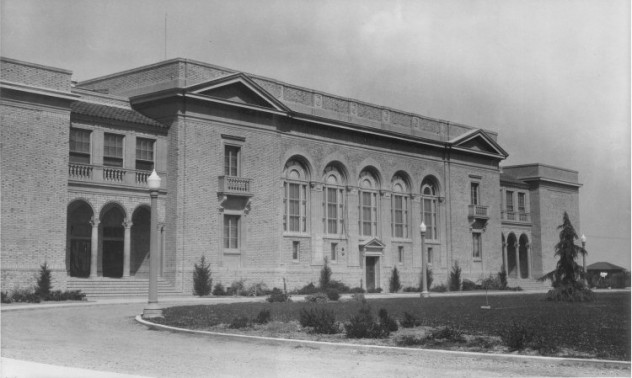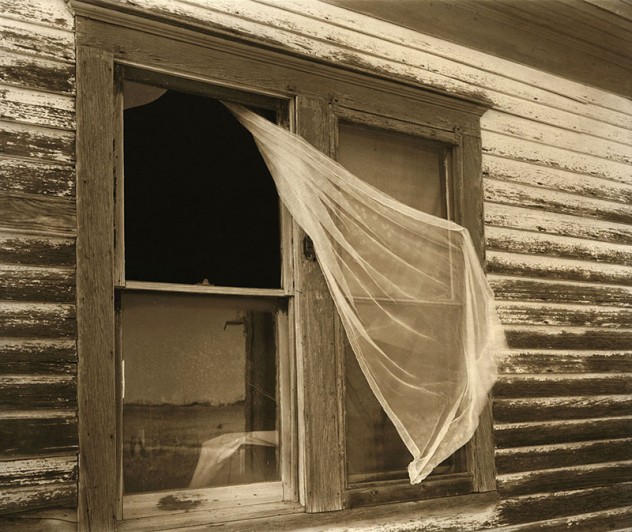 History
History  History
History  Weird Stuff
Weird Stuff 10 Everyday Products Surprisingly Made by Inmates
 Movies and TV
Movies and TV 10 Actors Dragged out of Retirement for One Key Role
 Creepy
Creepy 10 Lesser-Known Shapeshifter Legends from Around the World
 Animals
Animals 10 Amazing Animal Tales from the Ancient World
 Gaming
Gaming 10 Game Characters Everyone Hated Playing
 Books
Books 10 Famous Writers Who Were Hypocritical
 Humans
Humans 10 of the World’s Toughest Puzzles Solved in Record Time
 Mysteries
Mysteries 10 Scientific Mysteries We Don’t Fully Understand
 Weird Stuff
Weird Stuff 10 Celebrities Who Have Admitted to Alien Encounters
 History
History Ten Revealing Facts about Daily Domestic Life in the Old West
 Weird Stuff
Weird Stuff 10 Everyday Products Surprisingly Made by Inmates
 Movies and TV
Movies and TV 10 Actors Dragged out of Retirement for One Key Role
Who's Behind Listverse?

Jamie Frater
Head Editor
Jamie founded Listverse due to an insatiable desire to share fascinating, obscure, and bizarre facts. He has been a guest speaker on numerous national radio and television stations and is a five time published author.
More About Us Creepy
Creepy 10 Lesser-Known Shapeshifter Legends from Around the World
 Animals
Animals 10 Amazing Animal Tales from the Ancient World
 Gaming
Gaming 10 Game Characters Everyone Hated Playing
 Books
Books 10 Famous Writers Who Were Hypocritical
 Humans
Humans 10 of the World’s Toughest Puzzles Solved in Record Time
 Mysteries
Mysteries 10 Scientific Mysteries We Don’t Fully Understand
 Weird Stuff
Weird Stuff 10 Celebrities Who Have Admitted to Alien Encounters
10 Unsolved Ransom Kidnappings
One of the most infamous crimes of all time took place in 1932 when Charles Augustus Lindbergh Jr., the 20-month-old son of the renowned aviator, was kidnapped for ransom. Even after a ransom was paid, the infant wasn’t returned, and his body was found near the Lindbergh home two months later. Even though a suspect was captured and executed, the case remains surrounded in controversy to this day.
Unfortunately, other notorious ransom kidnappings didn’t have happy endings either. In some cases, the victim was murdered or never found. In others, a likely perpetrator was caught and punished for the crime, but they refused to reveal what happened to the victim.
10 Charley Ross

One of the first known victims to receive widespread publicity after being kidnapped was a four-year-old boy named Charley Ross. On July 1, 1874, Charley was playing with his older brother in the front yard when two men pulled up in a horse-drawn carriage and offered the boys candy and fireworks if they would take a ride with them. The boys were taken into town and after Walter was given money to go inside a store and buy fireworks, the two men left with Charley.
Charley’s seemingly wealthy father, Christian Ross, received notes demanding a $20,000 ransom for his son. However, a stock market crash had left Christian in debt, and he could not afford to pay, so he went to the authorities for help. Even though the kidnappers provided instructions for where to deliver the ransom, they never showed up. Months later, two criminals named Bill Mosher and Joe Douglas were shot while attempting to burglarize a house. Mosher was killed instantly, but before dying, Douglas confessed that the two of them were responsible for the Charley Ross abduction. Charley’s brother positively identified them as the men from the carriage. Unfortunately, they took the secret of what actually happened to Charley to their graves.
9 Dorothy Ann Distelhurst

The afternoon of September 19, 1934, five-year-old Dorothy Ann Distelhurst left her school to walk home, but never arrived. After the authorities were notified, they spent the next several days searching for her, but could find no trace. However, once the national media began focusing on the case, the Distelhurst family started to receive ransom letters. Authorities were unsure if any of them were genuine or if they were inspired by the publicity.
The most vivid ransom demand stated that Dorothy Ann would have her eyes burned out with acid if her family did not pay $175,000. On November 13, two employees of the Davidson County Tuberculosis Hospital were digging flower beds in a remote corner and wound up uncovering Dorothy Ann’s body. Her skull had been crushed, and her personal items and clothing were discovered some distance away. Most disturbingly, her face had been burned away with acid. In spite of an intensive investigation, the murderer was never found, and the case remains unsolved.
8 Douglas Mueller

At approximately 9:30 PM on March 16, 1977, 19-year-old Douglas Mueller finished his shift at a gas station in Scottsdale, Arizona and left to drive home. He never arrived, and his parents soon notified police. The next day, Douglas’s parents received an anonymous phone call ordering them to go to a specific payphone for instructions. Douglas’s father went to this payphone and found his son’s driver’s license, along with a ransom note that appeared to be in Douglas’s handwriting.
The note demanded that the Muellers pay $57,000 for Douglas’s safe return and provided instructions for a drop-off. The Muellers followed these instructions and dropped the money at the specified location, but no one ever showed up. Throughout the next two months, the Muellers received three more calls and went through three more drops, but the ransom was never claimed. Douglas’s abandoned car was later discovered at an airport, but his family would not receive any answers until 2011. After a hiker came across a male femur bone in a remote desert area, DNA testing would confirm that it belonged to Douglas. However, the rest of his remains have yet to be found, and the identity of his murderer is still unknown.
7 Annie Laurie Hearin

On July 26, 1988, 73-year-old Annie Laurie Hearin vanished from her residence in Jackson, Mississippi. Annie’s husband, Robert Hearin, was a prominent and successful businessman, and the family’s estate was worth from $100–200 million. When Robert came home, he discovered blood smears and a ransom note. The note instructed him to pay money to franchises owned by School Pictures, a company Robert had taken over a few years earlier. In exchange for the return of his wife, Robert would disburse the ransom money to 12 School Pictures locations throughout America.
When Robert held a press conference begging for Annie’s return, he received another note, which was signed by her and stated she would be sealed in a cellar if he did not comply with the demands. Robert mailed the money to the franchises listed, and one of these recipients was an attorney named Newton Alfred Winn. Winn had once been in a lawsuit with Robert over unpaid money, so authorities believed he was responsible for the kidnapping. In 1990, Winn was arrested and sentenced to 19 years in prison for conspiracy to kidnap, extortion, and perjury. He always maintained his innocence and was released in 2006. Unfortunately, Annie was never found.
6 Clark Toshiro Handa

During the evening of August 23, 1984, a three-year-old boy named Clark Toshiro Handa was abducted from his bedroom in Fairfield, California. The family had nine children, and Toshiro shared the bedroom with five other siblings, but none of them could recall anyone entering the room during the night. The next morning, Toshiro’s mother found a note on his bunk bed and noticed that the adjacent window was open. The note demanded that the Handas pay a ransom in exchange for Toshiro’s return.
Toshiro’s family complied with the instructions and brought money to a specified rendezvous point, but no one showed up (we’re noticing a trend here). The Handas never heard from Toshiro’s kidnapper again. Unfortunately, it was nearly a week before missing posters were circulated, and the abduction received some media coverage, so there were never any strong leads about who was responsible. The ransom demand was particularly bizarre—Toshiro’s family was not known for having a lot of money, so the reason he was targeted is unknown.
5 June Robles

Six-year-old June Robles was the daughter of Fernando Robles, owner of the Robles Electric Company. Her family was one of the wealthiest in Tucson, Arizona. On April 25, 1934, June was leaving Roskruge School when she was abducted. Two hours later, Fernando Robles was handed a note by a boy who had been paid 25 cents to deliver it. The note was signed by someone identifying themselves as “Z” and demanded that Fernando pay a $15,000 ransom for the return of his daughter.
After police were notified, June’s grandfather received a second note from the kidnapper, who agreed to lower the ransom to $10,000. Fernando was given specific instructions about where to deliver the money, but when he attempted to do so, no one showed up (surprise). On May 14, the governor received an anonymous postcard that revealed June’s location. She was found inside a metal box—buried in the desert outside Tucson. Even though June had been chained in the box for 19 days, the kidnappers provided constant food and water, so she was still alive. There were a lot of potential suspects, but not enough evidence to convict anyone. A federal grand jury reviewed the case, referring to it as an “alleged kidnapping” and implying that the Robles family might have staged the whole thing as a hoax.
4 Robert Wiles

Robert Wiles was the 26-year-old son of Tom Wiles, the millionaire owner of the aircraft service company, National Flight Services. Robert was employed with the company and worked at Lakeland-Linder Regional Airport in Florida. On April 1, 2008, Robert disappeared from work. Two days later, his parents were e-mailed a ransom note from “Group X,” demanding $750,000 for Robert’s safe return. Tom followed the instructions and left the money, but no one collected it, and he never heard from “Group X” again.
Suspiciously, Tom had previously purchased kidnapping insurance from his company for the exact amount of $750,000. This led to speculation that an employee of National Flight Services might have been responsible. The investigation eventually turned to the operations manager at Lakeland, who was reportedly the last person to see Robert alive. It was discovered that on the evening of Robert’s disappearance, Holt had purchased plastic sheeting and two rolls of duct tape. Holt’s alibi did not hold up, and he also allegedly used Robert’s cell phone to send the ransom e-mail. In January 2012, Holt was convicted of manslaughter and sentenced to 30 years in prison.
3 Georgia Jean Weckler

On May 1, 1947, eight-year-old Georgia Jean Weckler was driven home from school by a neighbor and dropped off at the end of the driveway at her rural home. Georgia never arrived home and was not seen again. Around the time of Georgia’s disappearance, a Ford sedan was seen in the same area, and witnesses in Fort Atkinson would later see a girl matching Georgia’s description, struggling with a man inside the vehicle.
Since Georgia’s father was a fairly wealthy public official, it was speculated that she may have been kidnapped for ransom, but no demands were ever made. Months later, a recently convicted rapist and murderer named Buford Sennett confessed that he and an unidentified accomplice had kidnapped Georgia for ransom. They gave her sleeping pills, but it was accidentally too much and she died, so they tossed her into the Blue River. A witness actually reported seeing Sennett burn Georgia’s body, and some ashes were later found on his property, but forensic testing on them proved inconclusive. Sennett later recanted his confession, but whether or not his kidnapping story was true, Georgia Jean Weckler is still missing.
2 Daniel Goldman

In 1966, Daniel Goldman was the 17-year-old son of Aaron Goldman, a wealthy and prominent contractor. In the early morning of March 28, an unidentified man entered the Goldman home and demanded that Aaron and his wife pay him $10,000 in cash. The Goldmans said they didn’t have that much money in the house, so the assailant tied them up. He threatened to kill their son if they didn’t pay him a $25,000 ransom and said he would call them to provide instructions. He then abducted Daniel and fled the scene in Daniel’s car, which was found hours later. The abductor never contacted the Goldmans again.
One theory was that the kidnapping was orchestrated by career criminal Joe “Chicken” Cacciatore, who resembled the family’s description of the kidnapper. It was rumored that the Goldmans stashed $10,000 in their home so they could help Daniel leave the country and avoid the draft when he turned 18. Cacciatore reportedly heard this rumor and Daniel was one day shy of his 18th birthday when he was kidnapped. In 1986, a woman claiming to be Daniel’s former girlfriend told a bartender that Daniel was killed after recognizing one of his kidnappers, but she disappeared after police were contacted.
1 Virginia Piper

On July 27, 1972, wealthy investment banker Harry C. Piper Jr. returned to his home to discover his housekeeper taped to a chair. She told him that his wife, Virginia, had been abducted by two masked men who left behind a ransom note. In exchange for Virginia’s safe return, they demanded $1 million, which was the largest ransom in United States history. Harry’s instructions were to drop the $1 million behind a Minneapolis bar, and he complied. The next day, an anonymous tip revealed that Virginia was chained to a tree in Jay Cooke State Park, and she was soon found alive.
Over the years, only $4,000 of the ransom was recovered. In 1977, Kenneth Carnahan and Donald Larson were charged with the kidnapping. After they were convicted, the two men were granted a retrial. It was ruled that the judge had inappropriately barred the testimony of a defense witness, who claimed she had overheard some other suspects plot the kidnapping. During the retrial, an expert witness testified that the evidence had been tampered with by the FBI, so Carnahan and Larson were acquitted.
Robin Warder is a budding Canadian screenwriter who has used his encyclopaedic movie knowledge to publish numerous articles at Cracked.com. He is also the co-owner of a pop culture website called The Back Row and recently worked on a sci-fi short film called “Jet Ranger of Another Tomorrow.” Feel free to contact him here.








